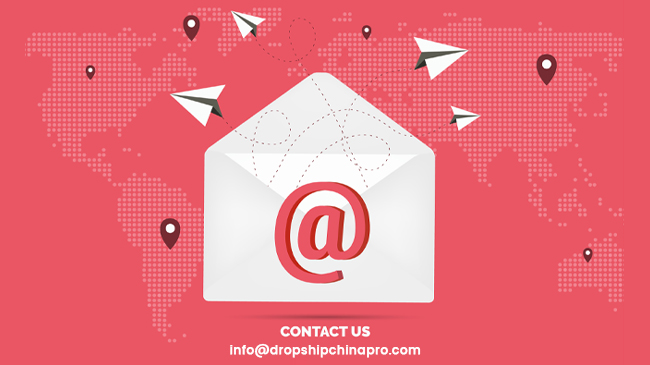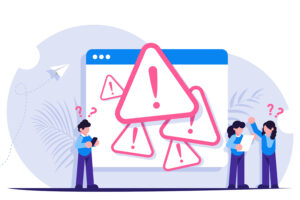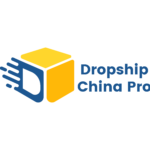Email marketing, as an efficient mode of online marketing, has been active on the Internet. Nowadays, businesses to customers, and business to business are more often kept in this way for online transactions, business consultation, and other aspects of correspondence. Doing well in email marketing can not only bring you online profits quickly but also help develop more potential customers and establish a good reputation for your website or products. If you want to learn more about how to do email marketing, then this article will benefit you a lot.
What is Email Marketing?
Email marketing is an online marketing tool that delivers valuable information to target users through email, with the user’s permission. You need to collect and organize the email addresses of potential user groups beforehand. Then send the marketing content, including the advantages and characteristics of products or services. Send it to their e-mail addresses in steps, types, and times, so as to achieve the purpose of promotion and sales.
You can also use it to increase brand awareness and customer engagement, and build relationships with your customers. It’s a great way to keep your audience informed of your latest offers or provide them with discounts on your services.
Email marketing is one of the highest ROI of all digital marketing channels. It is preferred by many operators because of its low cost, high efficiency, and accuracy.

Why Email Marketing is important?
In the eyes of many people, email marketing has long been an outdated way, and now it is time to use the latest marketing tools and methods such as social marketing and short video marketing. But let me show you a set of data: The ROI of email marketing is 1:42, while the ROI of Google is 1:2. That is to say, every $1 invested in email marketing returns an average of $42, while Google is $2. So this is why email marketing has been the first marketing method for so many years.
Low cost.
The cost of email marketing is very low. Whether it’s an individual or a business, the cost of sending hundreds of emails is very low, especially compared to other online marketing methods. 80% of marketers believe that email is a better form of marketing than advertising. Marketers classify customers according to their past behaviors and send specific marketing emails to different users. In this way you can effectively improve performance.
Fast and efficient.
The speed of email marketing is very fast, so that customers can get the latest news of the enterprise in the first time, and it can be effective in a short time. While search engine optimization, blog marketing and SNS marketing and other marketing methods may take months or even years of effort to fully play its role. In addition, because each email is sent to the target customer, so the turnover rate of online marketing is higher and more efficient.
Flexible and precise.
Companies can analyze the deeper needs of customers based on their response to emails and change the content of emails at any time in order to provide a better user experience. This way also makes the email delivery more accurate and the conversion rate of customers higher.
Broad prospects.
At present, many marketing methods have matured, but email marketing is still in the development stage and has a bright future. The development of enterprises needs to have visionary consciousness, find business opportunities earlier and occupy the market first.
To sum up, we can say that email marketing is indispensable for your business. Then let’s talk about how to do your ecommerce email marketing.

How to do Ecommerce Email Marketing
Step 1# Targeting campaigns
1. Identify what your target audience truly cares about.
Different types of consumers have different needs for products. If sellers conduct email marketing that uses the same message to reach different types of consumers, it is far less effective than sending targeted emails to each targeted consumer that address their specific questions and needs. So you have to identify what your target audience truly cares about and create email according to their different demands. Sellers can send personalized emails to consumers based on their name, geographic location, interests, etc. to make the email feel relevant to them and thus increase engagement.

- Consumer characteristics: segmenting consumers based on their gender, age, education or income level, etc.
- Geographic location: sending promotions that target specific areas or displaying specific locations in headlines and content to attract consumers’ attention.
- Spending amount: send targeted emails based on consumer purchase history to determine which consumers are likely to buy more expensive products and which consumers are more interested in lower-priced products.
Data shows that personalized emails can increase conversion rates by up to six times. And email marketing can generate $0.08 in revenue per email. That means if a seller sends personalized emails to 500,000 consumers, they could generate up to $40,000 in revenue. Needless to say, that’s a lot of extra revenue.
It’s worth noting that 70% of sellers are not currently using personalization in their email marketing strategy, which means that sellers who use personalized emails will be more competitive. In its simplest form, personalization takes the form of connecting with consumers by name, which is a surefire way to make your emails catch more eyeballs.
2. Provide valuable content for your target audience.
Once you know what your target users care about, you can design content that interests them based on that. The value of valuable content can be actual discounts or emotional value, such as interesting content for people to read. Here I want to share with you about one email marketing example so that you can understand this tip clearly.
Birchbox is a famous cosmetic subscription merchant in the United States. For a fixed monthly fee, you can receive a mystery cosmetic box every month, which contains a variety of different cosmetic products so that you can always enjoy different brands. The subject of this Birchbox email is.

“We Forgot Something in Your February Box!”
Open the email and there is a discount code inside. This is a way to remind customers that “we forgot something for you” (not really forgetting it, of course) to get their attention and then pass the discount code on to them. This is a smart way to advertise.
3. Send emails at the right time.
Sending emails to consumers at the right time will get more clicks and drive more traffic to your website, which will lead to more conversions. When is the best time to send emails? It’s hard to have a standard for this, but generally speaking, the right time is when consumers are likely to open, read, and even be willing to share the email content on social media and visit your website.
CoSchedule research has found that the best times to send emails are 6:00 am, 10:00 am, 2:00 pm, 8:00 pm, 10:00 pm and 12:00 pm local time. Of course, these times are for reference only. We suggest you to test the sending time of email marketing through A/B test, and analyze the number of clicks and visits in different time periods to find the best time for your target consumers to be converted by email marketing by repeated testing.

4. Make it easy for your audience to find you.
When a user reads an email, they may encounter a variety of questions, concerns, or want to tell you what they need. If you leave contact information you will be able to receive timely feedback from your audience, which is extremely valuable data. Rather than users replying to these emails to the email delivery server. Letting people know who you are shows that you are a responsible business person, and providing a clear email address or phone number makes it easier for them to get in touch with you.
5. Be consistent.
When we do email marketing, besides paying special attention to well-drafted headlines, well-written content, well-designed style and proper combination of various elements, we also need to pay attention to the frequency of sending when we send. Sending too often, will form aesthetic fatigue or even provoke antipathy. While low frequency or extremely irregular lead to customer forgetting. The ideal EDM marketing is you grasp the customer’s point of interest. And they can be sent in accordance with certain rules in an orderly manner. And maybe customers often write to interact with you, many customers even take the initiative to ask.
For e-commerce customers, a frequency of 2-3 emails a week to remind customers that your stores update or have special offers, etc. is the most appropriate. Of course you can also EDM according to your specific needs, but must be careful not to be too frequent without caring about the content. This is meaningless, and may even be blocked account.
Step 2# Retargeting campaigns
Retargeting is a web ad targeting technique that allows you to track users who have visited your site but have not made a purchase. Typically, we use Google Ads to track users across sites. Retargeting ads are one of the highest return-on-investment marketing methods because users have already visited your website. Retargeting ads save 50% on average over regular pay-per-click (PPC) ads. So if your PPC costs $2/person, retargeting costs only $1/person.
Create a list of existing contacts
The first thing you need to do is to organize the email addresses you have already collected from your target customers. These are very important free raw data. If this list is sufficiently large, you can move on to the next step. If it’s not, you should revisit your segmentation properties and/or type of retargeting.
Determine your Destination URL.
Usually, Google, Microsoft, Gmail, Yahoo Mail, and Outlook with DKIM outboxes are not spam boxes. If the mailbox is not verified, then it is likely to be recognized as a spam box. Therefore, it is highly recommended that you set DNS before sending. And please set the web URL yourself before creating a campaign so that the user can be tracked.

Segment your Ads for specific audiences.
Through the targeting campaign, we have made the first round of screening of users and selected those who have a tendency to buy. Then we have to send retargeting ads for this group of users. So we need to research this group of users, design and choose the content and methods they are interested in to carry out email marketing.
Create your ad.
For Facebook campaigns, set a lifetime budget for the length of the campaign, then monitor and adjust accordingly. Most beginners should leave the bidding to “Optimize for Website Click”. You can also name your ad set at this stage. This is helpful if you’d like to differentiate lists, creative, budget, etc. for different ad sets in the same campaign.
Track your campaign’s progress.
Congratulations, you’ve now created a conversion-based retargeting ad on Facebook! Now you can track website clicks, reach, CTR, CPC, and total spend to match them up to your initial goals. If you want to dive further into the ad’s metrics, you can go into the ad set where you’ll see information like clicks and spending per day. It is also easy to make edits to your ad from this screen, such as extending the budget, schedule, and creative assets. If you’re using a CRM, like HubSpot, most offer tools to look at the performance of your destination URL to track views, clicks, and submissions back to specific retargeting campaigns.
Step 3# Follow up on the results
Emails are not sent and finished, if you don’t do data analysis, then emails are sent for nothing. You need to use the statistics of email backend to make uniform data feedback for delivery, open situation, product link click situation and bounced mail situation. According to the data, you can have directional tracking. And brush the selection of customers at the same time to filter the customer’s intention products.
For example, if we send a development letter and track that the net open rate and click rate are not high, we can consider whether the subject of the email can be improved and whether the content still needs to be optimized. Look at the click situation of the product, there is a click on the specific link, we can focus on the follow-up tracking, and their intention products as the direction of facilitation. This way, you can keep optimizing, and your email marketing can definitely get better and better.
Remember to focus on these 4 Indicators:
- Delivery rate
- Open rate
- Click-through rate
- Sales volume

Email Marketing Platforms You Can Use
HubSpot Email Marketing
Hubspot is the best all-in-one marketing suite because it has great tools and reporting for all of your marketing campaigns across various channels (website, social, email marketing, and more). You can store all contact information with Hubspot’s CRM and attract an audience through lead forms, live chat, and online ads.
Sender
Sender is one of the best free email marketing tools in the market with features to ensure deliverability. It lets you create stunning newsletters without any HTML knowledge.
Sendinblue
SendinBlue is a complete SMS and email marketing software for businesses. They are one of the fastest growing email marketing platforms in Europe.
Mailchimp
Mailchimp is the best overall email marketing software because it has the features that most businesses need, without being overly complicated or confusing. Businesses can schedule campaigns, A/B test copy, and get reports that include open rates, click-through rates, unsubscribe rates, and more. Plus, it has the most generous free-forever plans of the software we tested.
Benchmark Email
Benchmark Email is a great option for an email marketing tool to design responsive emails that look great no matter which device they’re viewed on.
EmailOctopus
EmailOctopus is a popular email marketing software platform that has a mission to provide email marketing that’s simpler, more intuitive, and better value than the competition.

Email Marketing Agencies You Can Choose
Trendline
Trendline is a specialized email marketing and communications agency, that offers a range of unique services to its clients.
Soap Media
Soap Media is a digital marketing agency that offers 13 years of experience in conducting email marketing. They have a dedicated team of email marketing experts, that focus on compiling and managing cost-effective email campaigns for all of their clients.
Inbox Army
The Inbox Army is a full-service, specialized, email marketing agency that works for a wide range of businesses. They have been working in this field for many years now, and offer over 250 years of combined experience from all of their email experts combined!
The Good Marketer
The Good Marketer is a small, innovative, digital marketing agency that works with mainly small to medium-sized businesses. While they offer a range of different marketing services, they also specialize in developing high-quality and unique email marketing strategies.
Rejoiner
Rejoiner is a dedicated email marketing agency, based in the United States. When it comes to providing expert advice and guidance in the world of email marketing, these guys definitely know what they’re talking about.
Fulcrum Tech
Rejoiner is a dedicated email marketing agency, based in the United States. When it comes to providing expert advice and guidance in the world of email marketing, these guys definitely know what they’re talking about.

Final words
In the future, the Internet may only be a network marketing implementation channel for email marketing, and email marketing may be incorporated more into the standard system of marketing specification class. Whether online or offline, when you want to do customer relationship maintenance and get low cost and high quality traffic, email marketing must have a place.
If you want to learn more about internet marketing methods, you can bookmark our website. We will keep updating more marketing strategies.

I’m Sackod, the business development lead at DSCP. I focus on helping experienced dropshippers solve real fulfillment problems — from U.S. warehouse operations to supply chain optimization — with a hands-on, transparent approach.





